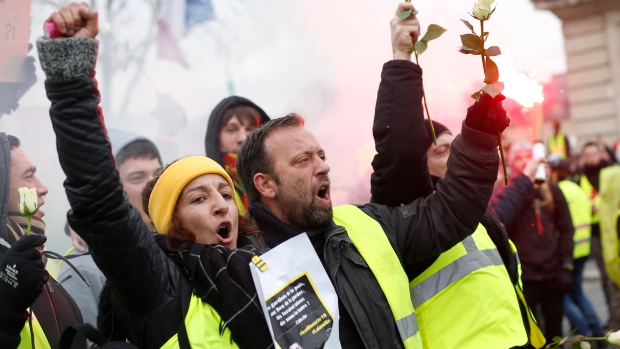
SAM QUATTROCIOCCHI – FEBRUARY 23, 2023
EDITOR: AIDAN CURRAN
Two years ago, Russia launched an invasion of Ukraine. The move sent shockwaves around the world and has resulted in widespread economic turmoil. Since then, as Ukrainian resistance proved more sturdy than expected, the shape of the war has shifted from one of maneuver to one of position. Rapid offensives and counter-offensives from both sides have given way to a war of attrition along fortified front lines in the southeast regions of Ukraine. As the battlefield settles into a stalemate and the long-term economic costs begin to sink in, each combatant is attempting to prepare for a longer war. To that end, Russia and Ukraine are responding by positioning their wartime economies in drastically different ways, which will have serious consequences for each of their abilities to wage war. A thorough understanding of the conflict and its trajectory is vital if we are to find a way out of it. The economic policies underpinning the two countries’ war efforts are just as vital to the outcome of the conflict as the situation on the battlefield.
Beginning with Ukraine, their economy has been hit very hard by the invasion. This should not come as a surprise. The country has been subject to an unrelenting missile barrage which has seen cities far from the front lines suffer heavy damage. If we zero in on places where boots-on-the-ground fighting has actually occurred, the devastation becomes all-encompassing. Despite the geographic variation in how hard the country has been hit by the war, the economic impacts are making themselves felt throughout the nation. In 2022, Ukraine saw its GDP shrink by 35% as more than a million have lost their jobs and more than 10 million have been displaced by the war. Unemployment has skyrocketed and inflation has ballooned towards 30% as more than half of firms slashed nominal wages, leading to a severe cost of living crisis. This is all occurring in the face of high government expenditure. Ukraine is spending an enormous amount of funds to maintain their war effort even though it is unclear where a sustainable source of money to pay for it will come from. The country has a regressive flat tax system and a very small tax base. There are few opportunities for budget cuts in order to free up money for the war. What all this means is that Ukraine is heavily reliant on western aid—both to keep their military competitive with Russia and to keep their economy running. But this is not sufficient to make up the deficit. So the Ukrainian government has been forced to borrow from their central bank (the NBU) in order to finance their spending. ‘Printing money’ like this further fuels the inflationary fire the country is sitting on.
This economic situation is unsustainable. The country lacks sufficient productive capacity to maintain its war machine. This is part of why western military and economic aid has been such a boon to Ukraine’s fighting position. But relying on an endless flow of support from the west is not a wise course of action when the war is increasingly looking like a long-term conflict of attrition. What Ukraine needs is a war economy where the state takes the initiative to compensate for the evaporation of demand in the private sector. The government would utilize central planning to direct labor and capital where it needs to go in order to support the war effort. Ideally, this would be done in a way that embraces a social partnership between organized labor and capital. Giving labor representation in this process would give the public a hand in deciding which sacrifices are made for the war effort and ensure that the social safety net is maintained to the greatest extent possible.
Unfortunately, Ukraine has made no such wartime adjustments. Rather than the kind of coherent macroeconomic approach that wartime necessitates, they have instituted a piecemeal approach combining several disparate economic approaches in a haphazard way. This comprises an unstable combination of neoliberal policies like widespread deregulation, extreme labor market reforms, privatization, and austerity with some weak nods towards state-direction of labor and strategic assets without embracing planning. Leading western economists have been pushing the country in this direction on the basis of skepticism that the Ukrainian state, riddled with corruption and inefficiency, has the capacity to implement a centralized wartime economy. Instead, they have advocated for the country to embrace a highly liberalized approach, with the goal of separating the government from the war as much as possible. Part of how this has been put into practice is through harsh labor reforms which have removed between 70 and 80 percent of the country’s workforce from any national labor law protections. Instead of social partnership between capital and labor, Ukraine’s government is putting itself into conflict with the unions that represent the labor keeping its economy churning in a time of total war. Despite the recent battlefield successes Ukraine has had, the war has taken on a new character. It is time to buckle up for the long haul or until a peace settlement is reached. Ukraine’s ability to do this is incredibly compromised by their lack of an economic framework that meets the moment. The band-aid solution has been relying on the west to almost single-handedly sustain a Ukrainian military and provide vital economic support. It is unclear whether that will continue to be enough or if cracks will begin to form in the west’s appetite for aid. We are already seeing the potential early signs of this manifesting in division within the Republican Party and hesitation from Germany regarding arms shipments, with both coming to ahead in a feverish debate surrounding the delivery of German Leopard tanks to Ukraine earlier this year.
This is all even more urgent when we take a look across the border at the state of Russia’s war economy. As soon as Russia invaded Ukraine, the United States and its allies hit them with severe sanctions. The hope was that they would cripple Russia’s ability to wage war and undermine public support for Putin’s regime. Two years out, it is clear that Russia weathered this economic storm far better than most expected. Contrasted with Ukraine’s 35% GDP drop, Russia saw only a light recession in 2022. While many experts forecasted a drop of 10% or more, their GDP fell by only by 2.2% in 2022 and the IMF expects it to grow by 0.3% in 2023. This outlook is no worse than Germany’s since the war began and better than the UK’s. Russian unemployment is low, decreased incomes notwithstanding. Business investment increased in order to build out new supply chains in response to sanctions. Industrial production in Russia even hit a six-year high in 2022. This is mostly thanks to state orders for military and some civilian goods.
On the one hand, it isn’t the fairest to compare Russia to Ukraine. Russia has a substantially larger population, more natural resources, and is not seeing its cities and industries razed by missile bombardment. Unfortunately, the war is going to compare the two economies whether we like it or not. Russia’s economic starting position is without a doubt more favorable than Ukraine’s. But crucially, their economic response to the war, while faced with major obstacles, is also more promising when it comes to sustaining a war effort. Russia’s invasion faced an immediate obstacle to domestic sustainability because it was launched by elites for their own interests. They did attempt to tie the war to national struggle with vacuous rhetoric of “denazification.” But there was a lack of material incentives which could give the Russian people skin in the game and build a durable base of support. However, after major setbacks and underperformance on the battlefield, Putin announced a “partial mobilization.” The Russian government emphasized that anyone drafted to fight would be paid the same $3,000 per month income (between five to six times higher than Russia’s median wage) as the professional soldiers which initially formed the bulk of the invasion force. Given that the mobilization was going to involve drafting anything from 300,000 to over 1,000,000 troops, this initiative was accompanied by redistributing billions of dollars from Russia’s budget. This is on top of $6 billion in investments over the next 3 years into the reconstruction of Mariupol and other devastated Ukrainian cities under Russian occupation. The Russian workers recruited for these efforts were offered double what they would have earned in Russia. The war has also led to growth in the military industrial complex as the invasion required more and more weapons and munitions. This sector has seen its number of employed workers and wage levels increase. Given the sheer size of Russian military industry, making up 20% of the country’s manufacturing jobs in 2009, these developments partially make up for the decline of sanctioned industries. The draft has also resulted in workers leaving their jobs to fight, freeing up work for unemployed people. These moves, fueled by major increases in military spending, have set up incentives where giant swathes of the Russian population now have a material interest in the war continuing, increasing public support for a more interventionist Russian state.
Not all is rosy for the Kremlin, however. A military Keynesian approach of spreading the fruits of imperialism to the masses is not guaranteed to work. It is far from a foregone conclusion that Ukraine will provide Russia with a new market to profit from. Failing this, the only flow of wealth to Russia that can be redistributed to the population is energy money. The sustainability of this flow of funds, and therefore the broader wartime economy, is reliant on Russia’s pivot to markets in China and India. For Russia to make enough money to fund its war effort, it will need Chinese and Indian economic growth to continue and for the energy demand that comes with it to keep rising. If Russia is able to overcome these obstacles though, they could be set up for the long haul in Ukraine. In the face of this, Ukraine needs to build a wartime economic system that is designed for the situation they find themselves in. Western aid may not last forever, and even if it does continue, it may not be enough of a band-aid. Ukraine has shocked the world and stopped the Russian military in its tracks. But, as of right now, its long term prospects to withstand Russia’s assault are decidedly less positive.
Featured Image Source: ArcGIS StoryMaps
Disclaimer: The views published in this journal are those of the individual authors or speakers and do not necessarily reflect the position or policy of Berkeley Economic Review staff, the Undergraduate Economics Association, the UC Berkeley Economics Department and faculty, or the University of California, Berkeley in general.



